Before choosing colors, floor and backsplash tiles, and fittings for closets, and before considering appliance models, sizes, or surfaces, a kitchen – whether brand new or a renovation project – needs to function as a workspace.
With the endless variety and combination of materials to choose from, the number of choices in kitchen planning can be overwhelming. Simple design rules that must be observed are balance and symmetry, focal points, scale and proportions. These are things that a kitchen planner can help with using computer drawings and sketches.
Regardless of how much imagination your clients bring to their kitchen design process and how extensive their research is, the kitchen in the home they are listing and selling should be suitable for the space and type of home.
As a real estate agent, it is definitely helpful to know some terms that apply to kitchen descriptions. In addition to the “eat-in kitchen” and “kitchen kitchen”, there are six different styles that define the space and impress your sellers and buyers.
There is no ideal kitchen plan or floor plan for every buyer, or for every apartment or house. All plans can be modified or refined to suit the needs of the buyer. However, a carefully planned and executed kitchen is an invaluable tool for selling a home at the maximum price.
Kitchens require plumbing, electricity and a gas pipe when a gas stove is used. In an existing structure, the location of the sink and refrigerator (if an ice machine and water access through the door is required) is limited to the plumbing.
The oven has some leeway depending on where the gas pipe is located. Electrical access is more flexible as the electrician can add wiring wherever needed to house equipment.
At this point it is appropriate to mention the classic rule of thumb for planning the kitchen triangle. As an agent, you will see several kitchens in floor plans and personal demonstrations with buyers and sellers. Once you get familiar with the idea of the work triangle, you are forever sensitized.
The food comes from the pantry or fridge in the kitchen and is then taken to the sink area for preparation and the stove to cook. The distance, measured in steps, between these three areas determines the efficiency – and desirability – of the kitchen.
1. The single-walled kitchen
No explanation is required here. The name describes the appliances, cabinets, and counters on one wall at the end of a living room, dining room, or large room. Usually found in smaller kitchens, the single wall kitchen is simple, straightforward and efficient.
Depending on the position of the water pipe, the sink in the middle between the stove and the refrigerator enables easy cooking. The work area on either side of the sink allows you to prepare and clean meals. If the single-walled kitchen is long enough, more than one cook can work at the same time without colliding.
Photo by Sidekix Media on Unsplash
Storage is vertical, which maximizes wall space, as well as cabinets and drawers under the counter. This type of kitchen is popular in a strong, modern construction, with the kitchen surfaces blending seamlessly with the rest of the room scheme.
2. The pantry
Popular even in small spaces (and extremely efficient for a single cook), the pantry is made up of two rows of cabinets and appliances facing each other with a passageway in between.
The galley essentially doubles the size of the single-walled kitchen and eliminates deep corner cabinets with inefficient storage space. Whenever you come across a pantry as an agent, be sure to open the cabinet doors, dishwasher, oven, and refrigerator to see if the doors collide and if there is enough space to move around.
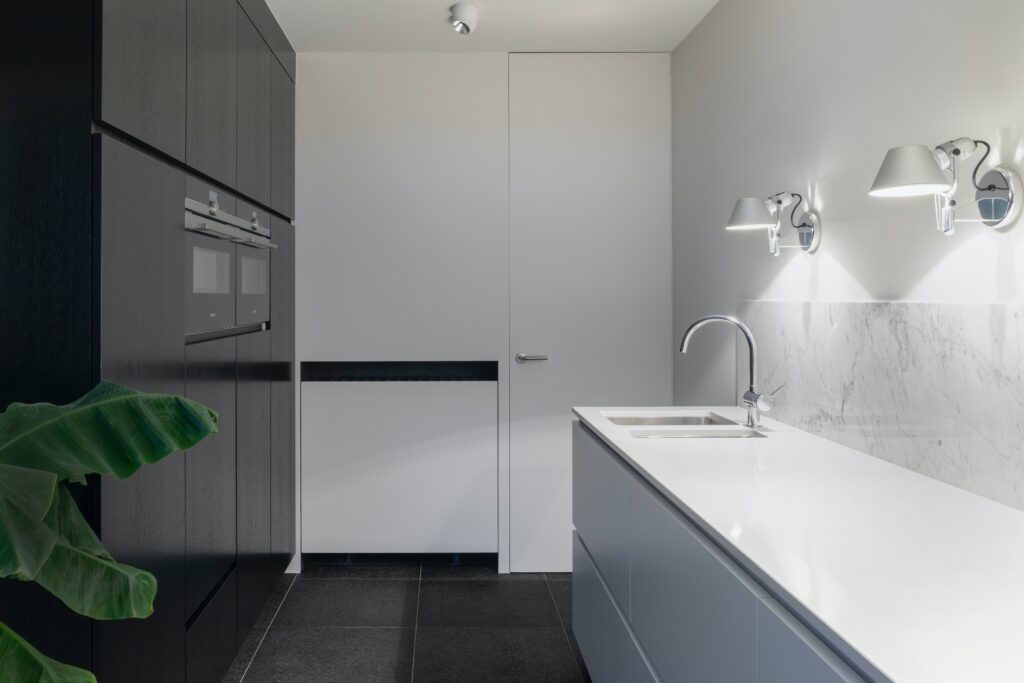
Photo by Jean-Philippe Delberghe on Unsplash
In a well-planned pantry, all kitchen appliances can be opened without disturbing each other. While they can be efficient, I’ve been into kitchens where I had to step out of the room to open the oven door – not the best plan.
3. The L-shaped kitchen
Whether small or large, the L-shaped kitchen is efficient in design. The layout includes two vertical wall units that form the letter “L.” Using the corner efficiently for storage or placement of equipment can help you maximize this type of plan. An L-shaped kitchen offers open traffic and easy access to all kitchen functions.
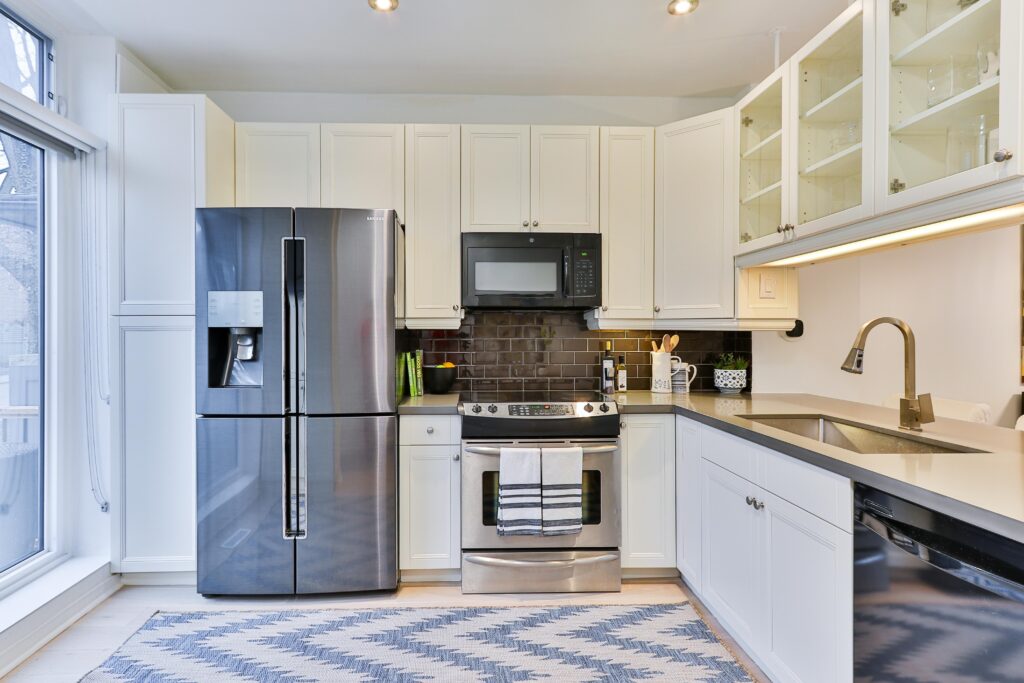
Photo by Sidekix Media on Unsplash
4. The U-shaped kitchen
For larger kitchens, the U-shaped plan uses three walls for food storage and prep, and staging areas for coating and serving. Remember that the three points of the work triangle are the refrigerator, sink, and stove. In a U-shaped layout, each of the three walls can be devoted to its own purpose.
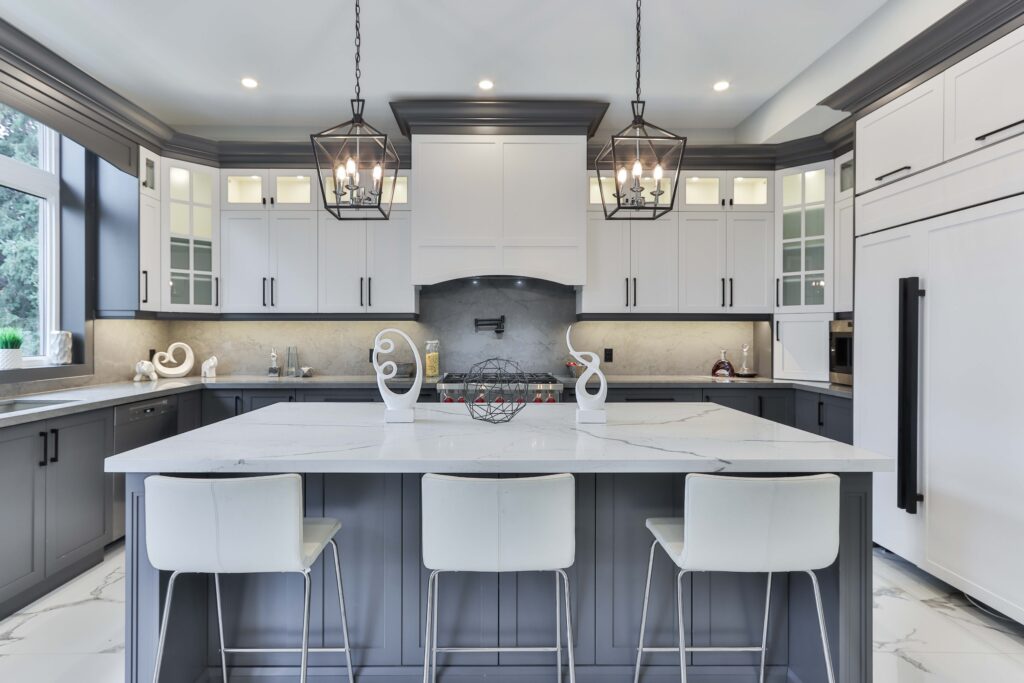
Photo by Sidekix Media on Unsplash
A U-shaped kitchen is ideal for multiple chefs or family cooking experiences. The U-shape can be continuous or interrupted by doors or passages. It’s important to understand the flow of traffic and how people entering the kitchen move between counters and work areas to avoid collisions and traffic jams.
5. The island kitchen
No, we’re not talking about a tropical kitchen. Instead, I am referring to a freestanding counter space or “island” that can often contain a sink, stove, or prep area. The island kitchen is usually located in open houses with a spacious kitchen.
Islands can be great hubs for social gatherings in the kitchen, and even provide space for counter-height bar seating. They’re great for buffets or bars when you’re throwing a party, and they’re often the reason people care about the kitchen.
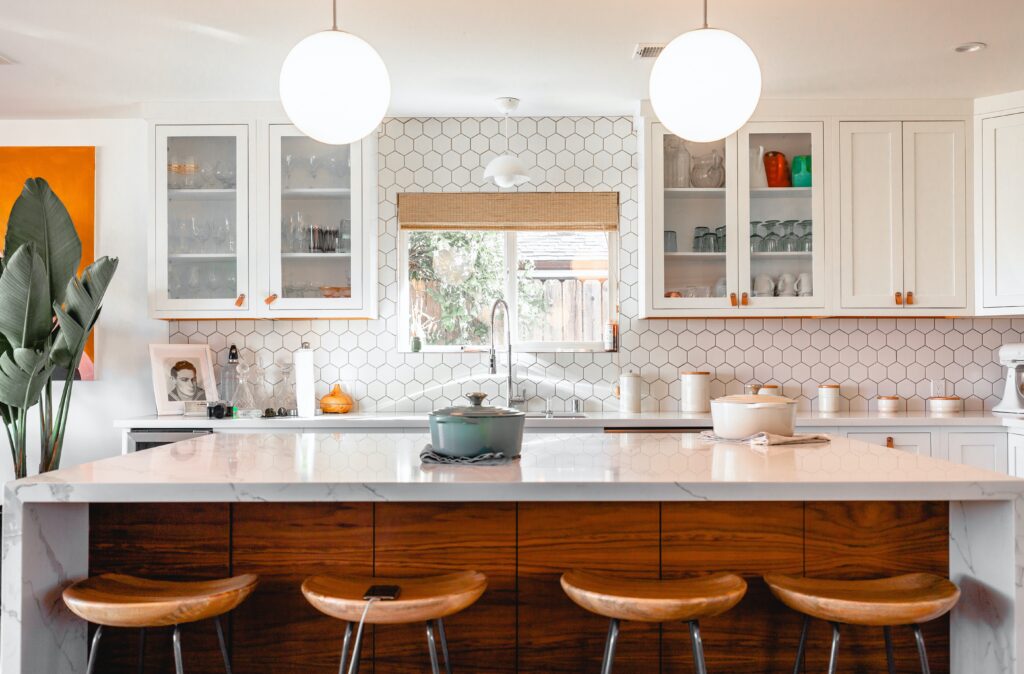
Photo by Creatv Eight on Unsplash
Here, too, the flow of traffic is the key to avoiding bottlenecks or dead ends. You don’t want people to feel trapped. An island in a well-designed kitchen is always a sign of luxury and spaciousness.
6. The peninsula kitchen
In a room that doesn’t lend itself to an island, a peninsula or counter attached to a wall or cabinet is another option. A peninsula is also an option for bar-level dining, socializing, or food preparation. It maximizes space and eliminates unnecessary steps.
A peninsula kitchen that is attached to a wall is best for a medium-sized kitchen. Depending on the amount of storage required, the peninsula may or may not have wall cabinets above it. Eliminating closets above creates a more open feeling in the space and invites family and guests to gather together.
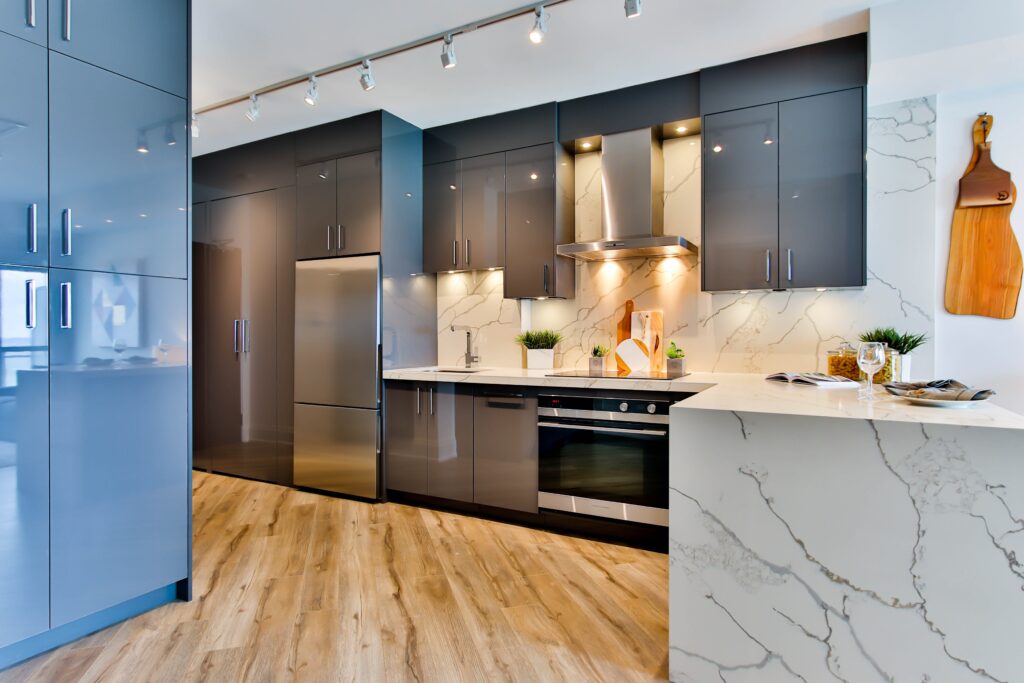
Photo by Sidekix Media on Unsplash
One final category, which I refer to as “clutter”, is a combination of one or more of the floor plans above. Kitchens invite innovation and adaptation to new appliances or lifestyles. A single wall kitchen can benefit from a moveable island or worktop on wheels. A galley kitchen can be converted into a U-shaped kitchen by adding a third wall.
As a real estate agent, developing the ability to think critically and creatively and to visualize the potential of a kitchen that will help the buyer upgrade and improve the space available is critical. Knowing about these simple kitchen layouts and styles can help you establish your authority and engage with your buyer – both of which result in more closed sales.
Gerard Splendore is a licensed real estate agent with Warburg Realty in New York. Connect with him on LinkedIn.

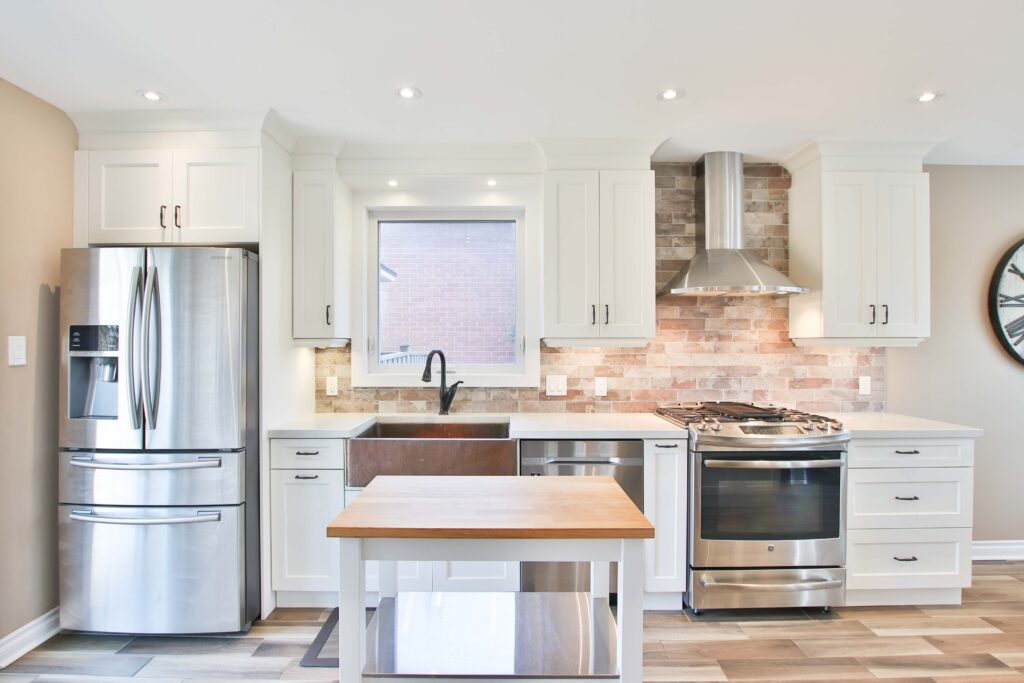
Comments are closed.